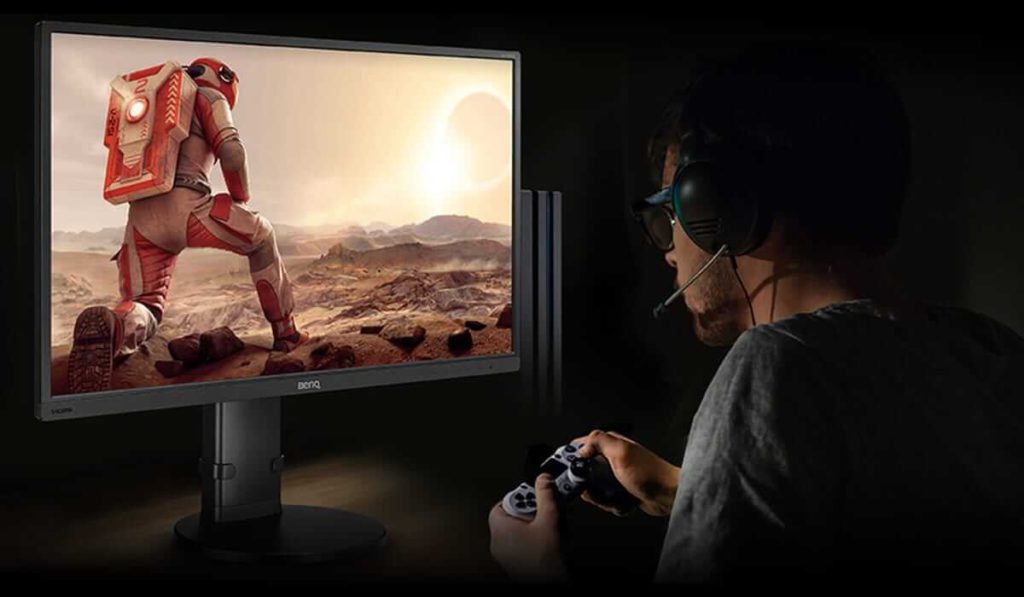It’s one of the most confusing terms for those looking to drop some cash on a new monitor and can make all the difference when playing a game. In this Gamer’s Guide, we’ll cover refresh rate, response time, and what it all means for your gaming.
There are a lot of numbers thrown around by marketing people when it comes to computer monitors, two of the most common being refresh rates and response times. We’ll not only cover the basics, but talk about what gamers should expect.

Refresh rates describe how often a display draws new images; response time is the amount of time it takes for a display to react after receiving input. Both are important when playing games. When you’re shopping for a new computer monitor, you might wonder why they can cost anywhere between $100 and $2,000. The more expensive ones have higher refresh rates (or response time), but just because they’ve got lightning quick input lag when playing Uncharted 4 doesn’t mean that they’re worth it for your everyday use.
Do you know What is a freesync monitor and Is 60hz good for Gaming?
In a home computer, timing is everything. If you’ve ever owned a PC, you know those 3- or 4-digit numbers printed on the front of your monitor can mean the difference between frustration and fun when gaming or working with video images. They represent the monitor’s refresh rate and response time (or gray-to-gray response time) — two important factors when evaluating monitors for use with games and other graphics-heavy applications.
Different computer monitors feature different refresh rates and response times. Learn about the difference between these two items.
What is refresh rate?
Refresh rate is the number of times per second that a display screen can refresh the image on the screen. A fast refresh rate is essential for gamers, as it means smooth transitions from one scene to another and less lag between when you input actions and when they appear on-screen.
Recommended refresh rate for a Monitor
| Range | 75 Hz or Higher |
| Value | Higher is better |
| Excellent | 240 Hz |
What is Response time?
Response time measures how quickly a liquid crystal display (LCD) can change the backlight to achieve true blacks and highlights. The lower the response time, the more fluid and real-time your gaming will be, with a lessened sense of input lag. After all, images don’t get any fresher than instantaneous!
Recommended response time for a good Monitor
| Range | 5 milliseconds or below |
| Value | Lower is better |
| Excellent Value | 1 ms |
Another way to put it: It’s how fast your screen responds when you change what’s being displayed, whether by moving an icon or by adjusting your monitor’s brightness and contrast settings.
Response time vs Refresh rate
There are two main specifications gamers need to know about displays: response time and refresh rate. When you take a shot in an FPS or zone for the top-level gear in your favorite MOBA, the performance of these two specifications has everything to do with making sure your kill or goal is as accurate as possible.
Response time measures the lag between when a graphics card receives new data and when it can show that data to you on your monitor. Refresh rate is the speed at which a monitor updates its display, measured in hertz (Hz). While response times are important for PC gamers, refresh rates are still the most often quoted specification.
Check out the Best Monitor For MacBook reviewed by themacios team.
A high-quality monitor will have a very low response time, so that even the fastest-moving video or games will appear perfectly smooth.
Every new generation of LCD and LED monitors brings with it a resolution increase. We’ve now reached the point at which high resolutions displays are being squeezed into smaller and smaller screen sizes. While this trend is mildly alluring for consumers, what causes the most excitement within the gamer community is a monitors’s refresh rate.
Response time and LCD screens
LCD monitors were a radical departure from CRTs in terms of picture quality, but they had a drawback: unlike CRTs that redrew the screen with every frame, LCD screens had to wait an entire frame time to do so. This meant that at 60 frames per second (60 Hz refresh rate), video would stutter inexplicably. The new a technology called “response time”, which was the inverse of refresh rate—how long it took the monitor to draw one frame—and everyone began warping the screen with aggressive overdrive when there was fast motion on screen.

Due to how the system worked on a CRT, when you reached the end of a screen refresh, you could feel a small amount of lag as the monitor drew in the next frame. To achieve this level of smoothness on modern LCD screens, manufacturers now program each monitor to redraw the screen 60 times a second, which is called a refresh rate. If it takes your CPU one millisecond to complete one frame on a game in full-screen mode, and each refresh takes 16.66 milliseconds , then each monitor will take 50% longer (33 millisecond) to redraw the screen than it does to render.
In contrast, LCD monitors draw to a screen buffer using RAM, and then copy that over to the screen. In other words, the frame that you see on an LCD display is typically drawn many milliseconds after you see the previous frame. During this time, the LCD screen completes a cycle of drawing all its pixels to the screen buffer, and then copying it all over to the final display. The process was so slow that many early reviewers of LCD monitors in magazines talked about how “blurry” these displays were in comparison to CRT monitors.
Bottom Line
If you’re a gamer that’s looking for an even smoother experience with your favorite games, and a monitor that can keep up with your rig at any refresh rate, then G-Sync is the technology for you.
For the rest of us, though, G-Sync monitors are a really big deal. There are charts everywhere comparing numbers, but there’s something that can’t be computed—the subjective experience each person has. If you’re happy with your monitor, keep using it—there’s no reason to replace it right now if you don’t want to.
If you’re a gamer, you’ve probably read or heard that G-Sync monitors can give you a big advantage in games that are more demanding like: Grand Theft Auto, Overwatch. G-Sync is Nvidia’s answer to the problem of frame rates falling below the monitor’s refresh rate. If your graphics card can crank out 250 frames per second, but your monitor runs at 75 Hz, then you’re only sending the game updates 60 times per second. Your monitor will show those “in between” states, and choppiness ensues. G-Sync monitors match their refresh rate with graphics card.
It’s crazy that the graphics card determines or limits you on what refresh rate you can do. If you have a high-end gamer rig, you should use a high end graphics card to improve the G-Sync experience. AMD cards with dual bios give you the ability to switch between low and high power states depending on your gaming needs.
if you have an old dual-core CPU and a mid-range graphics card, G-Sync will make your gaming experience better.
